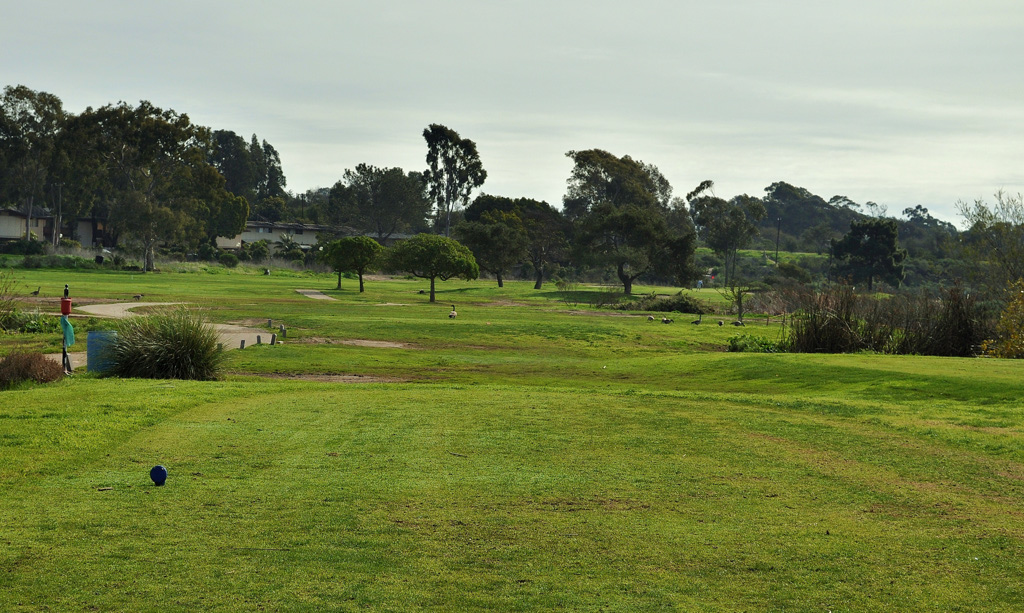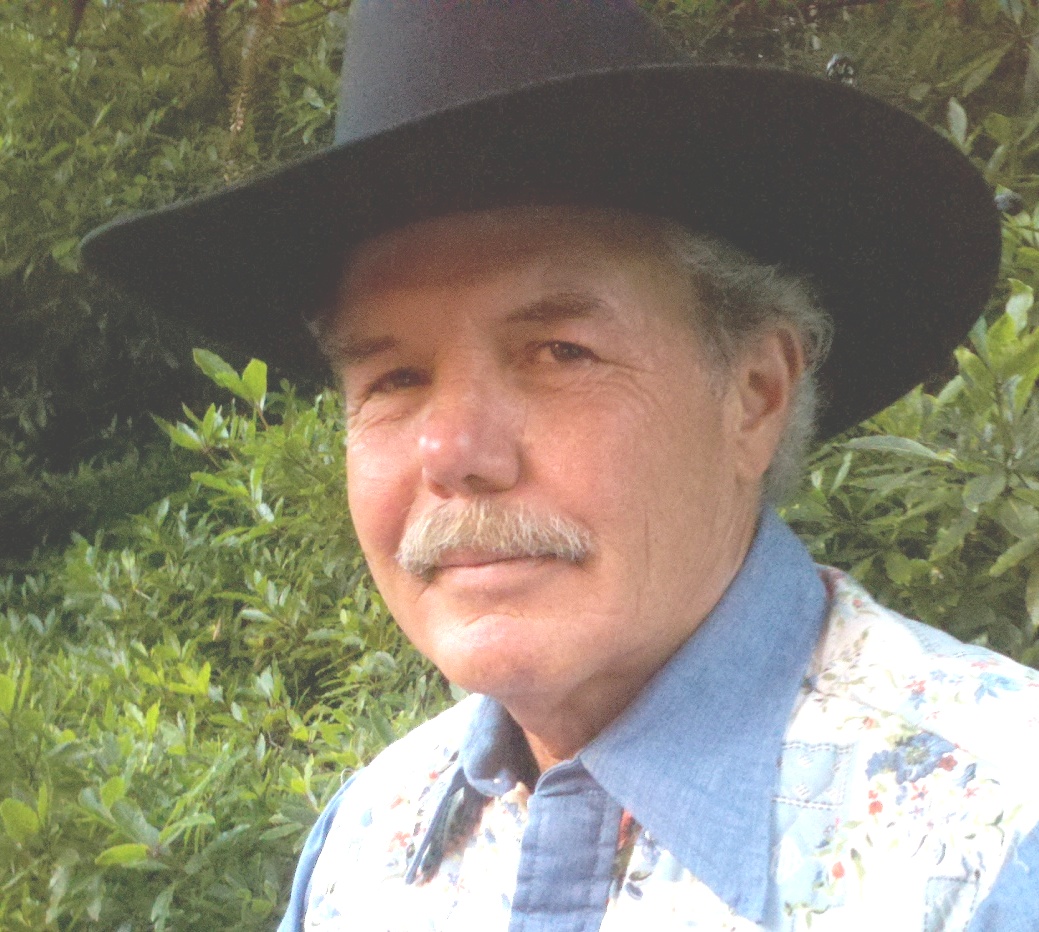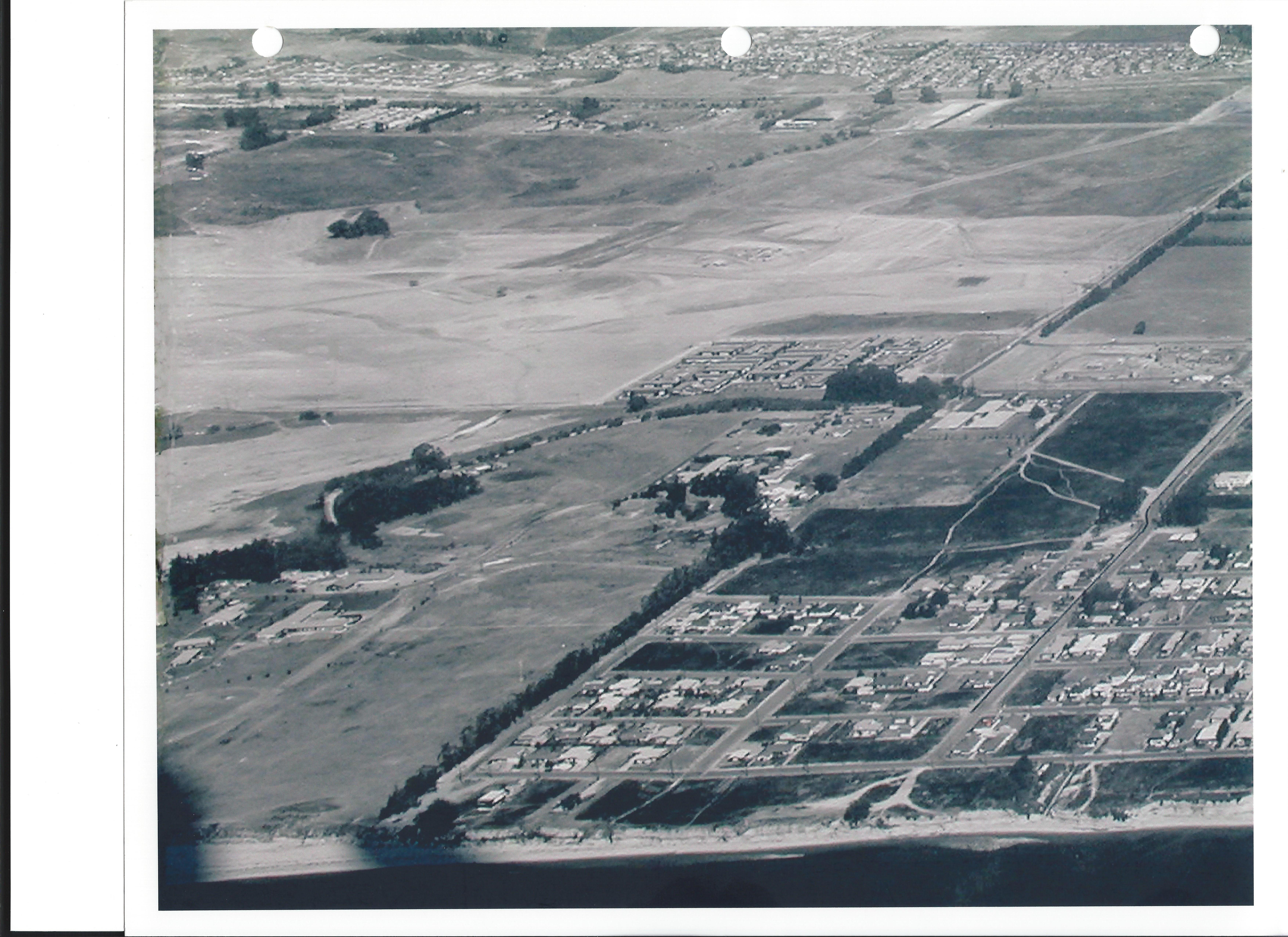A History of Ocean Meadows
Elbowing Goleta Aside

Fifty years ago in the Good Land of Goleta the Bishop Ranch property stretched to the ocean. Southwest of the country roads intersection of Storke and Hollister were 640 acres of grassy fields criss-crossed by gulches and a few agricultural access roads. Geologically, the area was a “fan delta” created by repeated erosion of the hills to the north, resulting in seasonal mud flows toward the ocean. The gulches certainly had winter water-flow but were generally dry in summer.
In 1960, a proposal was put forth and accepted by the Santa Barbara County Board of Supervisors to allow the owners to design a community and sell parcels for development. Maps were drawn, road easements were created, and a community was put on paper. To allow home building, massive grading was undertaken to straighten the gulches and create storm drainage from Hollister Avenue to the ocean.

Part of this flood-control grading was the creation of a 63-acre flood plain we now know as the Ocean Meadows Golf Course. The civil engineers wisely found a dual purpose for this flood water collection area. It was first a collector for storm runoff and secondly, a golf course that could accept the annual flooding. That’s how Ocean Meadows Golf Course was conceived.
Following the accepted community plan, a golf course was built around 1966. Further grading was minimal, with mounding for greens and tees and some improvements to area drainage. Culvert crossings and bridges were installed to facilitate golf. Devereux Creek and the Phelps Ditch were gulches that were then named. To control the silting of the existing semi-wet-land toward the ocean a weir (a low dam) was installed. The weir helped reduce the silting of the slough to the south by slowing flood runoff, allowing the silt to drop out of the storm runoff. This low dam saved the now Devereux Slough from filling with seasonal silt.
In the 40-year history of the Devereux Creek, the golf course has received four-plus inches of silting over 30% of the total area on at least six occasions. While these natural events caused headaches for the golf course crews, the dual function of the course property worked beautifully. Witnessing the occasional storm runoff on the golf course is an opportunity worth taking. Water moving at 15 miles per hour completely overwhelms the small creek and stretches to a width of over 100 yards, four to six feet deep. The dish-shaped golf course becomes a flood plain.
Great wealth is created by land use changes and the 640 acres discussed is no exception. Documents identify the University Exchange Corporation, Devereux Creek Properties, and the Bishop Ranch as participants although Google searches fail to really tell a clear picture or identify individuals involved.
In 1995-99, Mark Green (the golf course owner, who lives in Los Angeles) engaged Bermant Development (specifically Vice President John Campannella) to process proposals to build houses on the higher ground of the 72-acre property. The Planned Residential Development proposal was processed, and 50-59 units were approved along with rebuilding the golf course clubhouse and adding workforce housing. For unknown reasons, the last step, final approval before the Board of Supervisors, was withdrawn in 2007.
Why the project was abandoned is a very good question but probably is related to the crash of the housing bubble. Also interesting to this saga is the involvement of Carla Frisk, who was working as a Santa Barbara County planner during this application period. Frisk is currently employed by the Trust for Public Lands and a key player. She advocated diligently and successfully to obtain $7.2 million in public funds to purchase purchase 63 acres of the golf course floodplain. The public funds include environmental mitigation fees collected by various public agencies, such as the Coastal Resource Enhancement Funds distributed by our local governments.
I believe the proposed deal was arranged by the Green, Campannella, and Frisk, using grant-seeking tactics, over a five-year period. Significantly, the proposed deal leaves the high ground and possibility for 28 units to the owner. It would appear that land-use plan is to coattail onto planning processes being proposed by UCSB as part of its Long Rang Development planning, to take advantage of UCSB’s likely success and influence with the California Coastal Commission. The Trust rejects allowing Goleta to even be considered for involvement with this proposal. UCSB is developing North Campus, with about 300 units on 28 acres. This building site borders the golf course, clearly lacks open space by design and is not set back away from flying golf balls. I feel the environmental factions at UCSB would probably restore the creek next to their housing, but they fail to provide anything but vague planning ideas for the remaining 60 acres. My objection is that the existing environment, of an irrigated open space, is being destroyed without CEQA or an EIR review.
Frisk, using her current employment, the Trust’s website, and her environmental organizational connections, lobbied and misled various politicians to gain support for obtaining the grants that are being used to fund this insider transaction. She continues to promote the purchase vigorously. Specific Trust misstatements:
– The Trust says that The Devereux Creek was filled to create the golf course. It was not.
– The often-cited protection of the 63-acre floodplain from housing development is a false, unrealistic statement. Given the given the lack of access and the creek-setbacks that would be required, the current floodplain (at least half the 60 acres of the golf course proper) would not be buildable under any current building policies anyway. In the development proposal by Campannella (Bermant Development) in 2000, everyone involved agreed that the Devereux Creek would require setbacks of 50-100 feet and that much of the golf course property flooded annually. That is why the approved plan for the 58 units (2005) avoided the lower elevations for residential building and assigned the golf course as “recreational open space.”
– Even the vision of creating a wetland will not be possible because the elevation is too high and there is no natural source of moisture in the summer.
– Neighboring property values will not be enhanced.
– Furthermore, the golf course has never been offered for sale on the open market to determine its true value.

If the purchase is allowed, the golf course will quickly go dry and dusty due to the lack of irrigation. A beautiful existing habitat will be destroyed for the benefit of a few insiders. No engineering studies, environmental impact reports, or California Environmental Quality Act procedures have been required to confirm the vague visions presented by the advocates of this misguided, undocumented plan. The Trust for Public Lands should investigate and reconsider.
The lot split that facilitates the Trust’s purchase was appealed through the County’s process but then approved by the Coastal commission on October 21. During appeals, biased planning agencies inappropriately blocked CEQA, EIR, and necessary expert opinion as to vague concepts presented.
To be clear, the purpose of this letter is not to advocate maintaining a golf course, but rather to point out how public funds are manipulated for the benefit of a few. The public should have a voice in what grant and mitigation funds are used for. Sadly, our County Supervisors and Goleta Council have been blinded by the current environmentalist culture, and have not even considered uses for this land that would benefit the majority of citizens. The proposal being considered will greatly benefit Green, and Campannella, and further UCSB’s invasion of the Good Land of Goleta.
Raising awareness in this matter is not easy but I have been taught that citizens should speak up when a deal doesn’t pass the smell test.



